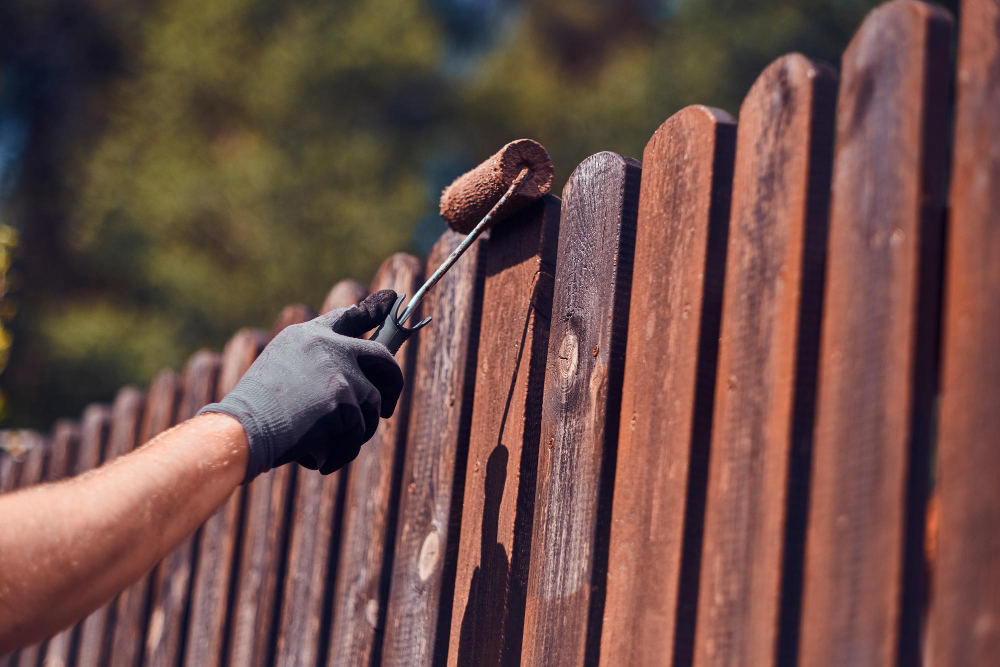Ultimate Wood Fence Treatment Guide

Wooden fences are a popular choice for homeowners and businesses alike, offering natural beauty and versatility. However, to maintain their aesthetic appeal and longevity, proper treatment is essential. If you're considering installing or maintaining a wooden fence and need expert guidance, this wood fence treatment guide will walk you through everything you need to know, and when you're ready, Masters Quality Fencing in Jacksonville, FL, is here to help with free estimates.
Why Treat Your Wooden Fence?
Treating your wooden fence isn't just about enhancing its appearance; it's crucial for protecting it against the elements, pests, and decay. Here are some compelling reasons why wood fence treatment should be on your to-do list:
- Protection Against Moisture: Untreated wood can easily absorb moisture, leading to warping, cracking, and rotting over time. Applying a water-repellent sealant can prevent these issues.
- Defense Against UV Rays: Sunlight can cause the wood to fade and lose its natural color. A UV-resistant finish helps maintain the fence's vibrant look.
- Shield from Pests: Wood is a natural target for insects like termites. Treatments with insecticides can protect your fence from unwanted critters.
- Increased Longevity: Regular maintenance extends the lifespan of your fence, providing you with more value for your investment.
- Enhanced Aesthetic Appeal: Treatments can bring out the natural grain of the wood and allow you to choose a finish that complements your property’s style.
Types of Wood Fence Treatments
Before you reach out to fence companies in Jacksonville, FL, it's essential to understand the different types of treatments available. Here's a rundown of the most common options:
1. Sealers
Sealers are the first line of defense against moisture. They penetrate the wood to create a barrier that repels water. Sealers are transparent and maintain the wood's natural appearance. Regularly applying a sealer is crucial for fences exposed to frequent rainfall, especially in humid areas like Jacksonville, FL.
2. Stains
Stains not only protect the wood but also enhance its color. Available in a range of shades from clear to deep brown, stains allow you to customize the look of your fence. They penetrate deeper than sealers and offer moderate protection against UV rays.
3. Paints
Paint provides a thick protective layer over the wood. It offers excellent UV protection and comes in an array of colors, allowing for greater aesthetic flexibility. However, painted fences require more maintenance as they can peel or chip over time.
4. Preservatives
Preservatives contain chemicals that protect the wood from insects and fungal decay. These treatments are especially useful for areas prone to pest infestations. It's important to follow safety guidelines when applying preservatives.
5. UV Inhibitors
UV inhibitors are often added to stains and sealers to prevent sun damage. They help maintain the wood's natural color and prevent fading over time.
How to Treat Your Wooden Fence
Now that you know the types of treatments available, here's a step-by-step guide on how to treat your wooden fence:
Step 1: Clean the Fence
Before applying any treatment, ensure the fence is clean. Use a pressure washer or a scrub brush with a mix of water and mild detergent to remove dirt, mold, and mildew. Allow the fence to dry completely before proceeding to the next step.
Step 2: Sand the Wood
Sanding removes rough spots and opens up the wood's pores, allowing treatments to penetrate more effectively. Use medium-grit sandpaper and work along the grain of the wood.
Step 3: Choose the Right Treatment
Based on your region's climate and your desired aesthetic, select the appropriate treatment. For Jacksonville, FL, where humidity and sunlight are prevalent, a combination of a water-repellent sealer and UV-protective stain is ideal.
Step 4: Apply the Treatment
Using a brush, roller, or sprayer, apply the treatment evenly across the fence. Start from the top and work your way down to prevent drips and streaks. Ensure all surfaces, including corners and edges, are adequately covered.
Step 5: Allow Time to Dry
Follow the manufacturer's instructions regarding drying times. It's best to treat your fence on a clear, dry day to allow the treatment to cure properly.
Step 6: Regular Maintenance
To keep your fence in top shape, perform regular inspections and reapply treatments as necessary. Depending on the product used, this may be every 1-3 years.
Finding the Right Fence Company in Jacksonville, FL
Installing and maintaining a wooden fence requires expertise and quality products. When searching for fence companies in Jacksonville, FL, consider the following tips:
- Reputation: Look for companies with positive reviews and a solid reputation in the community.
- Experience: Choose a company with extensive experience in wood fence installation and treatment.
- Quality Products: Ensure they use high-quality materials and treatments to guarantee the longevity of your fence.
- Free Estimates: Opt for companies that offer free estimates, like Masters Quality Fencing, to plan your budget effectively.
Conclusion
Proper wood fence treatment is essential for preserving the beauty and functionality of your fence. Whether you're looking to install a new fence or maintain an existing one, understanding the different treatment options and methods is key.
For those in Jacksonville, FL, Masters Quality Fencing is ready to assist with all your fencing needs. With expert advice, top-notch installation, and reliable maintenance services, we ensure your fence remains a lasting asset to your property.
Ready to enhance your outdoor space with a beautifully treated wooden fence? Contact Masters Quality Fencing today for your free estimate and take the first step towards a durable and stunning fence.